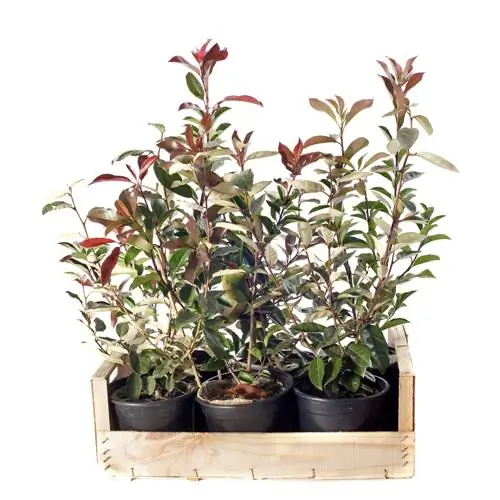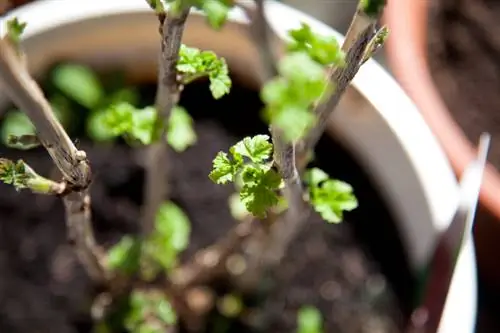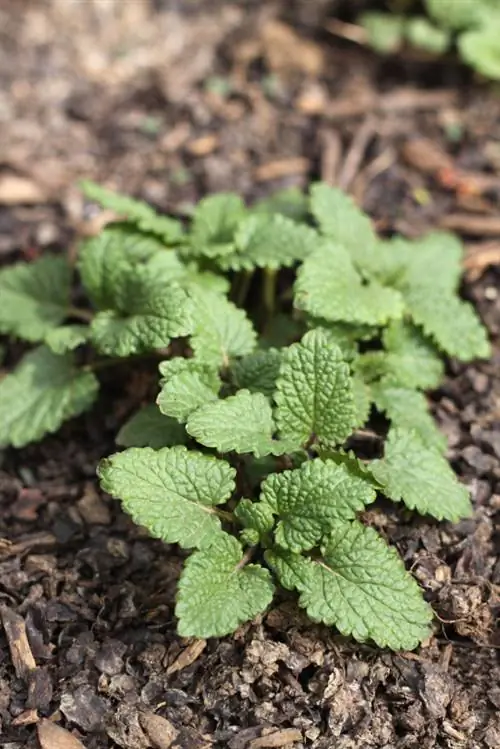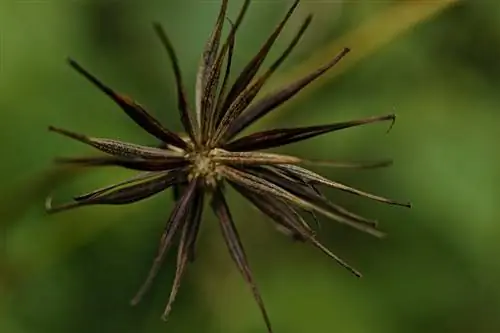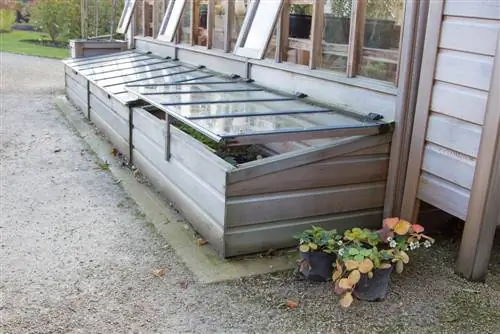- Author admin [email protected].
- Public 2023-12-16 16:46.
- Last modified 2025-01-23 11:21.
High trunks and shrubs of loquats are ideal for cultivation in containers. The growth characteristics are crucial for choosing the right pot. Thoughtful care supports the he alth of your plant.
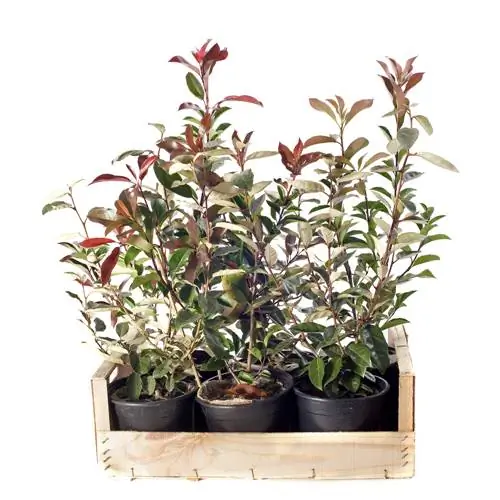
How do you cultivate a loquat in a pot?
Loquats in a pot require a large plant pot (at least 30 cm side length), drainage-rich pot soil and regular watering without waterlogging. They should be repotted and fertilized in spring. Young plants need protection from frost in winter.
Requirements for the bucket
High stems are bred through head grafting. They no longer grow in height, but instead show an increase in thickness. The crown grows expansively, causing the tree to develop a dense root system. The root system of the loquat is highly branched and spreads flatly in the ground. This also applies to shrub-shaped loquats, which grow both in height and width.
Loquats require a large plant pot with a round or square shape. The bucket must be larger than the ball of the pot so that the roots can develop. The minimum dimension is 30 centimeters in height, width and length. A high-quality potting soil (€13.00 on Amazon) with permeable conditions is suitable as a substrate. Make sure that the soil is enriched with perlite, lava granules, sand or fine grit so that the water drains away better. You can prevent waterlogging by draining pottery shards at the bottom of the pot.
Care
Loquats do not tolerate waterlogging and must not dry out. Water the plants as soon as the soil in the container feels dry. Thorough watering is not a problem if the excess water can drain away. The loquats also need water in winter. You should only give the plants water on frost-free days.
Plant your cotoneaster in a larger pot about every two to three years. The perfect time for repotting is spring, just before the growing season begins. Also fertilize the plant in spring with a slow-release fertilizer. This supplies the tree with nutrients throughout the summer, meaning there is no need for further fertilization.
Wintering
The foliage of older plants survives the winter without protection. When temperatures are below zero, young plants must be covered with a garden fleece so that no light falls on the leaves. This measure protects against excessive water loss. Remove the fleece as soon as the temperatures are in the plus range. Loquats need light and air for he althy growth.
How to protect the root ball:
- place the bucket on a styrofoam plate
- Pimpled foil and fleece insulate the pot
- Spread straw, leaves or hay on the ground

